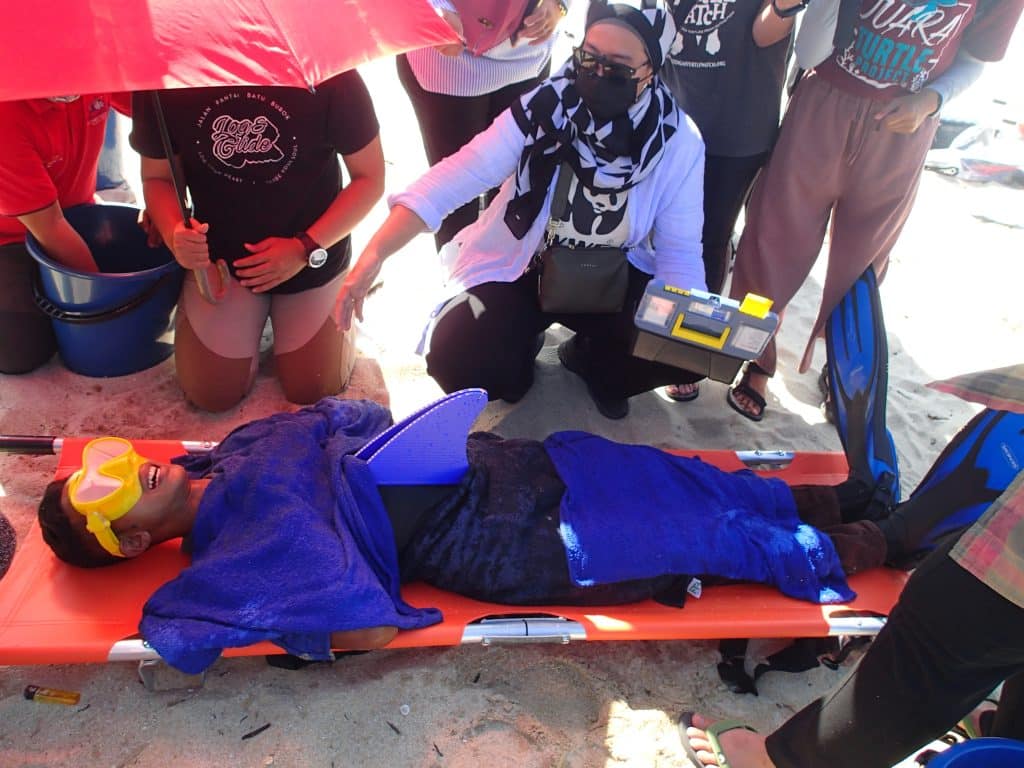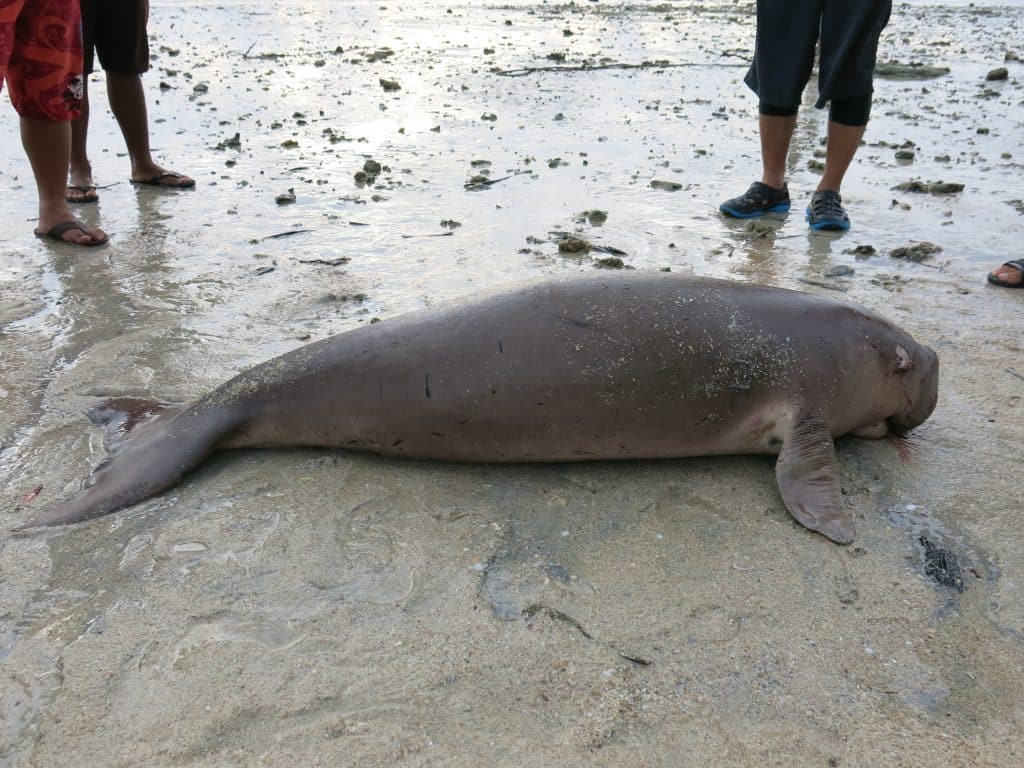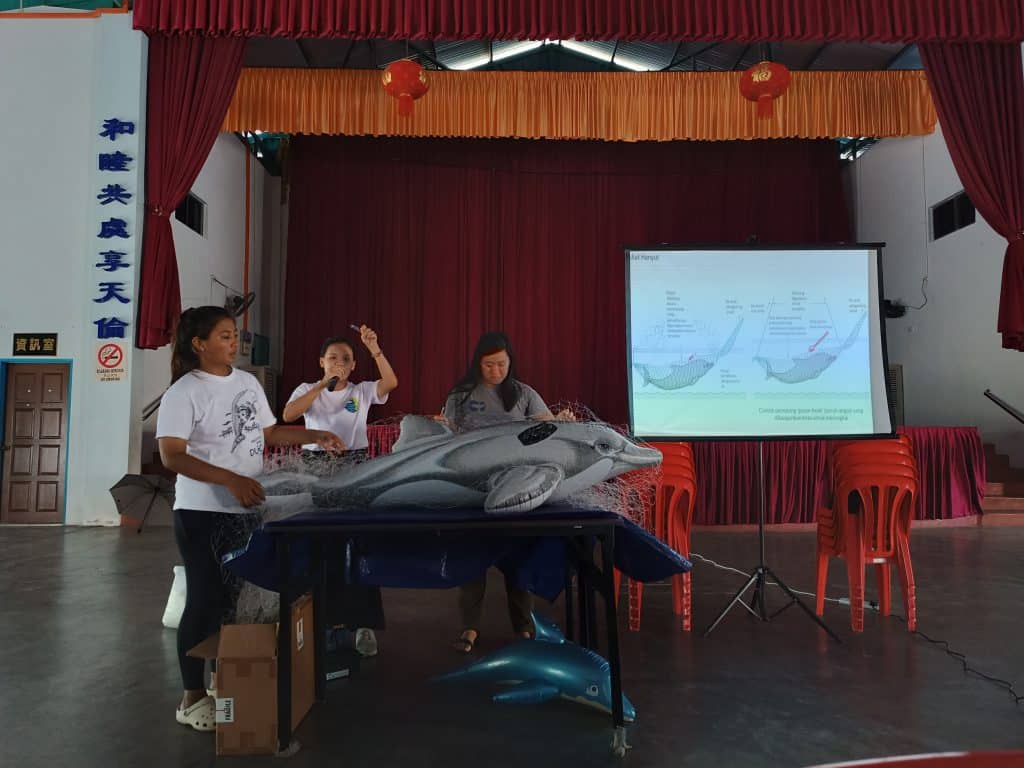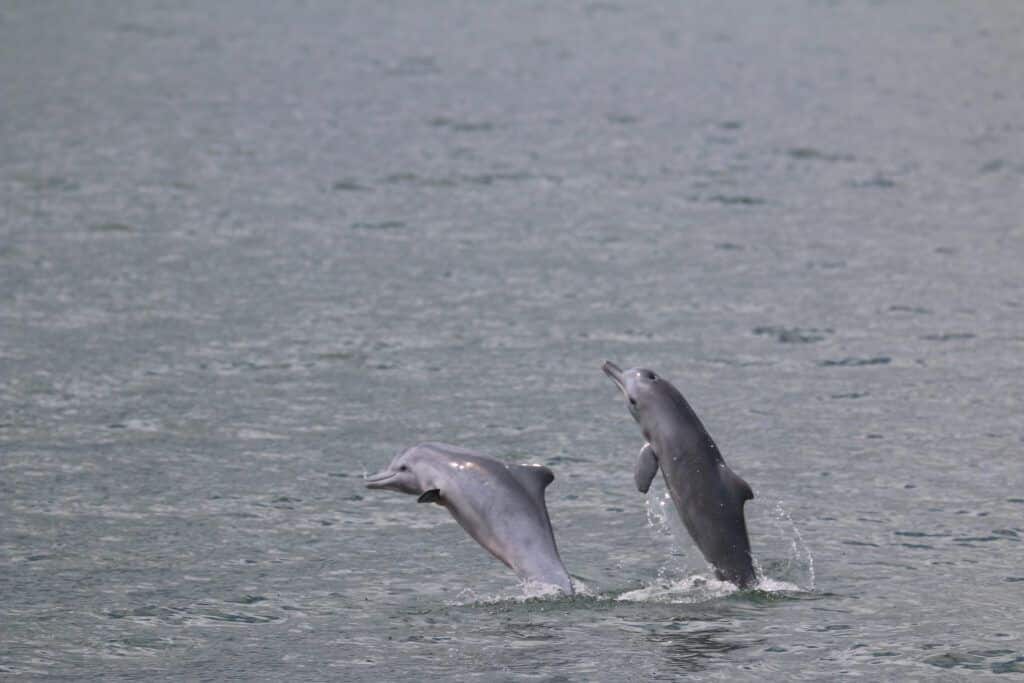Responding to Stranded Marine Mammals
Setting down the life-sized inflatable dolphin, Dr. Vivian Kuit directed the onlookers toward the beach. A volunteer laid supine along the sand, clad in flippers and a fake dorsal fin. Marine mammals often strand themselves along Malaysia’s long coastline, and as a Scientific Officer for MareCet, leading stranding response workshops for locals is one of Vivian’s regular duties. While inflatable dolphins make a good visual, it’s important for workshop participants to understand what lifting a live animal feels like, hence the surrogate dolphin in plastic flippers. As they raised their peer on a makeshift stretcher, Vivian continued the lesson, which equips local people with the necessary skills to save stranded marine mammals.
MareCet has held stranding workshops across Malaysia for over a decade, inviting local fishers, NGOs, beachgoers, and staff from Malaysia’s Department of Fisheries and other government agencies to learn how to respond to stranded marine mammals. Death strandings are frequent, where a marine mammal carcass washes ashore as a result of boat strikes or fatal injuries sustained from bycatch—the accidental capture of marine mammals in fishing nets. Live strandings are much rarer, where the marine mammal has beached itself out of stress, illness, or due to injuries; often the animals can be saved in these incidents, but the response must come within a few hours of the stranding. MareCet receives a handful of calls every month about strandings, which are a threat to endangered species like Indo-Pacific humpback dolphins, Irrawaddy dolphins, and Indo-Pacific finless porpoises.
While the actual rate of strandings in Malaysia is unknown, stranding reports have increased in recent years. MareCet hangs informative posters with their contact information throughout coastal communities, so people immediately know who to call whenever a stranded marine mammal is found. But people who call are often too far away for MareCet to reach in person, especially in the event of a time-sensitive live stranding. This is what makes MareCet’s workshops so important—they teach communities how to save stranded marine mammals, or in the event of death strandings, how to contribute to research that supports marine mammal conservation. MareCet also offers video calls to those reporting strandings from faraway locations, to walk them through each step of what to do.
MareCet’s workshops typically draw between 20-70 attendees, and can last between several hours or several days. Techniques they teach include providing shade to the stranded animal, making sure its skin stays moist with seawater, keeping its eyes and blowhole free of sand, keeping the animal upright, digging pits beneath its fins to relieve joint pressure, keeping away large crowds, and to avoid dragging the animal by its tail. Over the years, these workshops have been received very favorably and interest in them has only grown, with MareCet now being invited as guest speakers to similar workshops held by those they’ve inspired.
Vivian and her teammates want anyone to be able to play a role in marine mammal conservation, and by acting as first responders to strandings, everyday people can make a significant difference for marine mammals and help MareCet make Malaysia’s waters safer.








